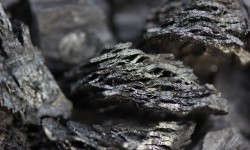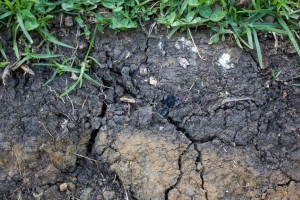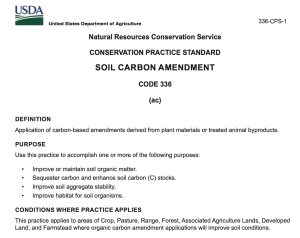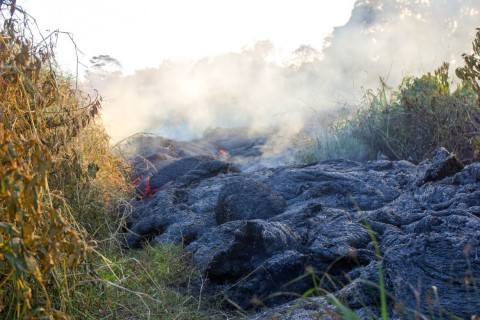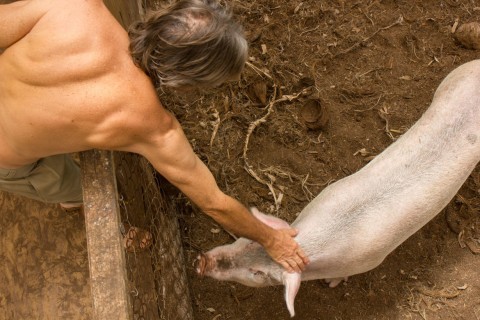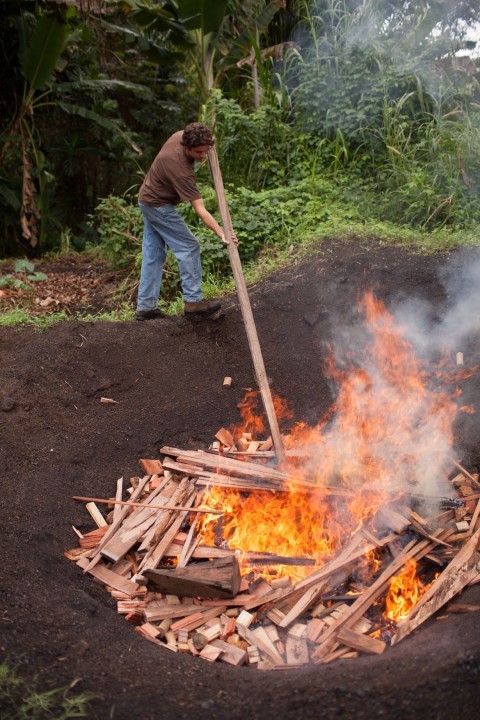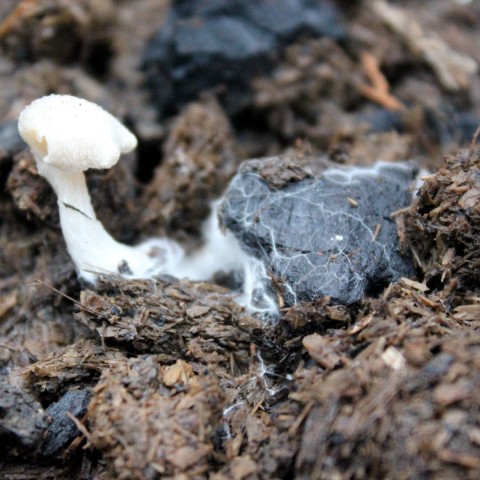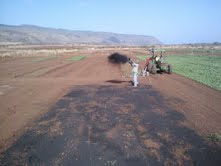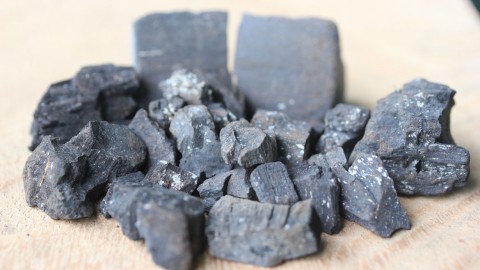Resource Guide
1.) There are a bunch of RESOURCES to browse here, but don’t forget to check the NEWS section for more. We’ve been posting outside news and internal updates there for years.
2.) Engagement is welcome. If you have information we can use to improve the resources we are offering, or if you would like to collaborate on research and demonstration efforts, don’t hesitate to Contact Us.
Agricultural Benefits of Biochar
Agricultural Benefits of Biochar
Biochar is simply defined as a biomass charcoal when used or found in soil. For as long as fire and plant life have co-existed, pyrogenic organic matter (biochar) has played a role in the development and fertility of topsoil. Biochar is effective in retaining water and nutrients in the root zone where it is available to plants, increasing soil tilth, and supporting microbial communities
Biochar and Water Conservation
Biochar and Water Conservation
 Similarly to other forms of soil organic matter, biochar can have a profound effect on water conservation. In both coarse and fine textured soils, biochar can improve plant available water and water use efficiency by altering soil structure (i.e. porosity, bulk density, and aggregation) resulting in increased water retention and/or infiltration and percolation rates. Biochar can help significantly buffer the negative impacts of drought, infrequent irrigation events, and reduced water availability while sustaining much needed crop yields.
Similarly to other forms of soil organic matter, biochar can have a profound effect on water conservation. In both coarse and fine textured soils, biochar can improve plant available water and water use efficiency by altering soil structure (i.e. porosity, bulk density, and aggregation) resulting in increased water retention and/or infiltration and percolation rates. Biochar can help significantly buffer the negative impacts of drought, infrequent irrigation events, and reduced water availability while sustaining much needed crop yields.
Learn More
Biochar in Vineyard Trial
Vineyard Field Trial with Biochar and Compost_ 3rd Harvest Report & 5th Harvest Report
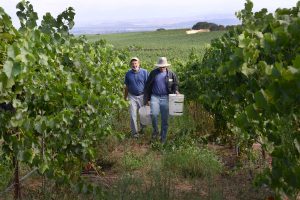 In this vineyard field trial biochar and compost treatments were applied separately and in combination during soil preparation activities prior to planting Pinot Noir vines. We observed improved crop yield for all treatments in all harvest years: 2019-2023. The highest overall yield resulted from the compost-biochar mixture. Economic analysis shows positive returns for biochar by second harvest.
In this vineyard field trial biochar and compost treatments were applied separately and in combination during soil preparation activities prior to planting Pinot Noir vines. We observed improved crop yield for all treatments in all harvest years: 2019-2023. The highest overall yield resulted from the compost-biochar mixture. Economic analysis shows positive returns for biochar by second harvest.
3rd Harvest Report
5th Harvest Report
Biochar + Compost
Biochar + Compost
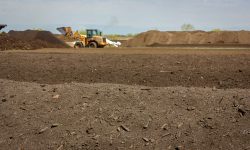 Biochar can improve the compost process, and in turn the biochar is improved as well. Amending early stage compost with biochar can result in reduced nutrient loss, reduced greenhouse gas emissions, and other benefits. During composting, biochar is improved with benefits such as added complexity to biochar surfaces resulting in increased functionality and nutrient loading.
Biochar can improve the compost process, and in turn the biochar is improved as well. Amending early stage compost with biochar can result in reduced nutrient loss, reduced greenhouse gas emissions, and other benefits. During composting, biochar is improved with benefits such as added complexity to biochar surfaces resulting in increased functionality and nutrient loading.
Learn More
Biochar Application Rate Calculator
Several Ways to Use Biochar
Biochar has been found naturally occurring in soils around the world as a long-term stable component of soil organic matter. Using the most common testing method for measuring organic matter, loss on ignition, biochar is impossible to differentiate from other forms of organic matter. Furthermore, because biochar does not easily move through the soil profile, generally remaining where it is applied / incorporated, we have found it most useful to discuss biochar applications in terms of the percent organic matter (% OM) equivalent applied in the volume of treated soil. To simplify these calculations we developed a worksheet called the “Biochar Application Rate Calculator_% OM”. This tool allows users to calculate how much biochar is needed to achieve the desired increase in % OM for a specific project, including options for both broadcast and in-row applications.
Biochar Carbon Credits
Biochar Carbon Credits
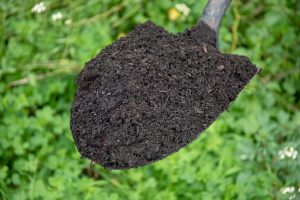 Pacific Biochar offers carbon dioxide removal with the tangible co-benefits of aiding forest management efforts where our biochar is sourced, and improving soil health where our biochar is applied. Biochar is listed as one of the top five natural climate solutions for climate change mitigation in a 2019 Intergovernmental Panel on Climate Change (IPCC) report.
Pacific Biochar offers carbon dioxide removal with the tangible co-benefits of aiding forest management efforts where our biochar is sourced, and improving soil health where our biochar is applied. Biochar is listed as one of the top five natural climate solutions for climate change mitigation in a 2019 Intergovernmental Panel on Climate Change (IPCC) report.
Learn More
Carbon Removal with Co-Benefits
Carbon Removal with Co-Benefits
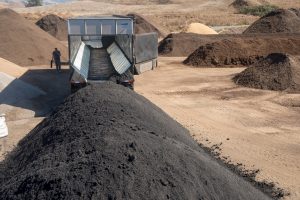 Biochar carbon credits currently only quantify the net-removal and storage of emissions resulting from the biochar production process, not forest health (upstream) or soils (downstream), increased biodiversity, water savings in agriculture and other positive benefits. Here are some of the additional ecosystem co-benefits produced by biochar:
Biochar carbon credits currently only quantify the net-removal and storage of emissions resulting from the biochar production process, not forest health (upstream) or soils (downstream), increased biodiversity, water savings in agriculture and other positive benefits. Here are some of the additional ecosystem co-benefits produced by biochar:
Learn More
How We Produce Biochar
How We Produce Biochar
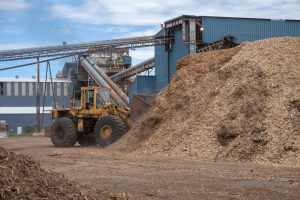 Pacific Biochar has identified a way to leverage existing infrastructure for biochar production, making for an approach that is cost efficient and quick to scale. In short, we partner with certain biomass power plants and work together to modify their equipment for production of biochar. Here is a bit more detail on what that looks like.
Pacific Biochar has identified a way to leverage existing infrastructure for biochar production, making for an approach that is cost efficient and quick to scale. In short, we partner with certain biomass power plants and work together to modify their equipment for production of biochar. Here is a bit more detail on what that looks like.
Learn More
Biomass Management
Biomass Management
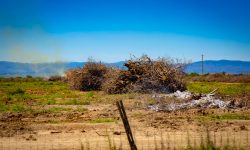
Orchard waste being burnt to ash to clean the field. It could be used to make biochar instead.
The story of biochar is inevitably a story about biomass and how people manage biomass resources. In California, decades of forest management practices that included over-planting and fire suppression have led to forest ecosystems that are overloaded with woody biomass. Drought and climate change have compounded the problems, leading to large areas of unhealthy forest systems that are prone to catastrophic fires.
Across the state forestry efforts are mobilizing to reduce fuel-loads in high fire risk areas, limiting the excessive accumulation of biomass and promoting sustainable forestry practices. Biochar can be a powerful tool; turning a woody biomass problem into an opportunity to build healthy soils, generate renewable energy, and improve the health of our forest ecosystems through effective biomass management.
Learn MoreEnergy Production
Energy Production

Pictured here is a modified biomass energy plant in CA that produces biochar and energy from forestry wastes and fire hazard thinning.
Biomass energy generation integrated with biochar production can provide renewable energy and carbon sequestration. In 2017 biomass energy accounted for 2.82% of the states energy production. In that same year, solar and wind made up about 12% and 6% respectively. In the efforts for California to meet goals of renewable energy, it is most likely that biomass energy will continue to play only a very small portion. But it has an important role to play nonetheless.
Biomass power plants play a critical role in woody biomass management, and can produce power rain or shine. Biomass power is often located alongside industries that require heat energy, thus providing co-generation of heat and electricity (such as at sawmills). And when the biomass used for power is transformed into biochar, it provides a pathway for fixing carbon and sequestering it in soils. This is a form of Biomass Energy with Carbon Capture and Storage (BECCS), listed by the International Panel on Climate Change (IPCC) as a key technology for carbon drawdown
Learn MoreThe Big California Biochar Model
The Big California Biochar Model:
Forest biomass management, carbon drawdown, drought resiliency, and nitrogen conservation on a statewide scale.

California forest in summer
This is a tool we’ve built. There is a comprehensive worksheet that we are sharing in it’s editable form, and a narrative document that explains the numbers with context and story. Please feel free to use, share, and to collaborate with us on building the next version.
We call it The Big California Biochar Model, because, well, it’s a big and comprehensive model about California and biochar. It started with a simple question “California forests are facing an overload of fuel, leading to catastrophic fires, and the State is looking to remedy this problem… if all of that excess biomass were made into biochar, would there be enough soil to accept it?” The answer is yes, yes, there’s more than enough soil to accept all that biochar. And while doing it we can drawdown carbon, improve water conservation, and reduce nutrient pollution – so of course we mapped that out too.
Biochar in Vineyard Trial
In 2018, the USDA National Resource and Conservation Service (NRCS) introduced a new Interim Conservation Practice Standard called the Soil Carbon Amendment under Code 808 that proposed guidelines for funding biochar and compost applications through the Environmental Quality Incentives Program (EQIP). In 2022 it was adopted at the federal level as a Conservation Practice Standard (no longer interim) for Soil Carbon Amendment, under Code 336.
We’ve made a resources page to help answer some frequently asked questions.
Learn More
